Heel pain in children is NO joke! When your child is in pain, it just plain hurts you too.
In this article, I will thoroughly discuss exactly how to treat heel pain and get your child back into their game as quickly as possible.
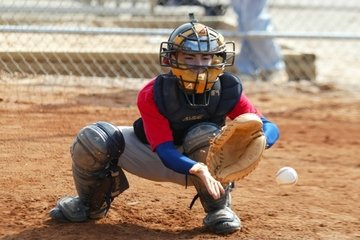
Because Sever’s Disease is the most common cause of heel pain in children, I will focus on the specific treatments that I utilize to nip this particular condition in the bud, but the recommendations outlined below will definitively aid in heel pain no matter the specific cause.
To read more about the signs and symptoms of heel pain in kids, feel free to read either (or both) of the following articles: “Heel Pain in Kids – Everything You Need to Know” and/or “Sever’s Disease in Children – Is It Affecting Your Child’s Game?“.
Onto what you are here for… let’s talk treatment!!!
A Quick Overview on How to Treat Heel Pain
It is all too familiar… a concerned parent bringing their child to my office with the complaint of heel pain and the fear that little Johnny is doomed from becoming the “next great thing” in his sport of choice because of it.
No fear… Dr. Misty is here!
There ARE ways to efficiently “knock-out” this burdensome pain once and for all and I am here to lay them all out on the table. I will tell you (in detail) exactly how I successfully treat my little patients that come in with this particular complaint.
I utilize the methods outlined below day-in and day-out to get kiddos with heel pain back on their feet: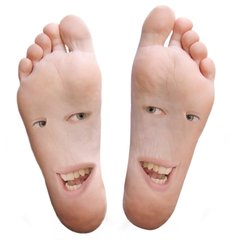
- Rest
- Ice
- Oral Medication
- Stretching
- Shoe Inserts
- Casting
Let’s talk about these in further detail…
Rest – The Dreaded Word
No child (or parent for that matter) wants to hear the dreaded word “REST”, but I could not write an article concerning how to treat heel pain without addressing it.
So… here it goes!
Rest is FREE and is one of the best ways to go about combating your child’s pain. It can take many shapes and forms and can include total rest to merely activity modifications.
Because Sever’s Disease doesn’t cause any long-term foot problems AND it will eventually go away on its own, temporarily stopping a sport, or reducing intensity, duration, and frequency, will definitely aid in the total elimination of your child’s heel pain.
However… I AM a realist as a physician AND I have treated my own son’s heel pain and I KNOW that for the aggressive athlete “rest” is sometimes not an option.
For this reason, I will leave this here and move on to more fluid ways to combat heel pain in children! ((:
Don’t Forget the Ice
You hear it quite frequently, but just how exactly does ice help with conditions such as heel pain?
Icing an injured area actually works to decrease tissue metabolism thereby reducing the amount of secondary muscle damage and edema (or swelling) of the area. In addition, ice is a great analgesic because it slows down the velocity of nerve conduction.
Simply put… ice decreases inflammation (or swelling) AND aids in reducing pain of a particular area (in our case the heel)!
So how do you effectively ice the heel?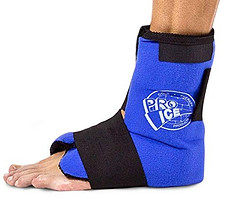
I typically recommend icing the heel for 15 minutes at a time. You want to make sure that the ice is not in direct contact with the skin (to avoid frostbite) by applying a barrier, such as a towel, in between the skin and ice. To be most effective, this needs to be performed every 1-2 hours and ALWAYS directly following participation in an event.
Because it is physically difficult to hold (or balance) ice onto the heel area, products have been created for this purpose. One of my favorites, which I ALWAYS recommend for heel pain, is an Ankle/Foot Ice Therapy Wrap. Products such as these allow your child movement while therapeutically delivering the “cold” treatment that the area needs to heal.
Oral Medication – The Do’s & Dont’s
While I am NOT a huge advocate of “pill-popping”, there are certain times that I do recommend the use of oral medications (when they are not contraindicated) for particular conditions.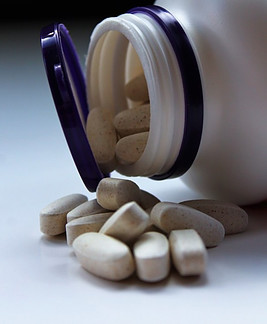
We do NOT like to see our babies in pain. If something can help relieve it… let’s do it!
When talking about the implementation of medications in our treatment of heel pain, all medications are NOT equal!
As long as your child has no medical conditions that prevent them from taking what we call non-steroidal anti-inflammatories (a.k.a. NSAIDs), this is my go-to for heel pain. These are common household, over-the-counter medications such as Ibuprofen, Motrin, and Aleeve.
NSAIDs far exceed acetaminophen (Tylenol) for the treatment of heel pain because they not only provide relief of pain, but they also work to block the production of certain chemicals by the body that cause inflammation.
When I recommend these medications for a child with heel pain, I typically instruct the child to follow the directions that come with the medication on how much and how often. I DO recommend taking the medication regularly for 48 hours and then as needed for pain.
How to Treat Heel Pain with Stretching
Stretching is critical in the treatment of heel pain in children.
To better understand, let’s quickly review the reasons that conditions, such as Sever’s Disease, cause pain.
Our children undergo rapid growth spurts. When these “growth spurts” occur, their heel bones develop more rapidly than the surrounding muscles and tendons. This results in a tightening of these muscles and tendons which pull directly on the heel bone thus causing pain and inflammation. To read more on this, visit my article titled, “Sever’s Disease in Children – Is it Affecting Your Child’s Game?”.
How can we help relieve this pain? Simple… let’s stretch it out!
Stretching acts to not only strengthen our muscles, but also to promote flexibility… flexibility that our children need more of when suffering from conditions such as Sever’s Disease.
Before I go into my three favorite stretches for heel pain, I do want to mention that any stretching exercise should ONLY be performed when NO ACUTE PAIN is present. Stretching while significant pain is present will only increase the pain thus being counter-productive.
Now… on to the BEST stretches for heel pain in kids! These stretches should be performed together at a minimum of five times per day. It is AMAZING what these simple stretches will accomplish!
The Active Stretch
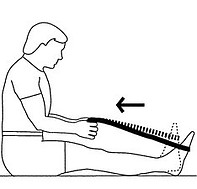
Begin stretching exercises with active stretching. This prepares the muscles for a rigorous treatment.
Simply have your child SLOWLY pull the foot and toes in an upward direction to stretch the muscles of the calf. This is best performed while sitting with the legs straight out in front of them and can be performed with or without the use of bands.
Ensure that your child is performing this very gently and controlled as sudden jerking motions may lead to intensified and prolonged pain.
Repeat this stretch at least five times prior to continuing on to the next stretch.
The Gastrocnemius Stretch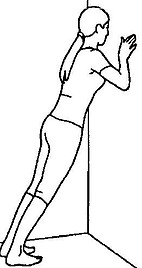
Following the active stretch, focus should then be moved onto the gastrocnemius muscle which is along the calf area on the back of the leg.
Have your child stand facing a wall with their toes pointed towards the wall. Instruct them to lean forward towards the wall bracing the palms of their hands onto the wall. It is important to ensure that they do not raise their heels while performing this stretch. This position should be held for 45 seconds and repeated three times per stretching session.
Should your child not feel a stretch along the back of their legs, have them move their feet farther from the wall and repeat.
The Soleus Stretch
The soleus muscle is located on the lower half of the back of the leg.
To perform this stretch, have your child stand in front of a wall with their nose touching the wall and the toes of both feet up on the wall. Next, instruct them to bend the knee until a stretch is felt in the lower leg and back of the heel. Hold for 45 seconds and repeat three times.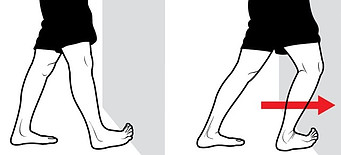
Shoe Inserts – A Must Have
If you speak to any physician regarding Sever’s Disease… you are going to hear one word (actually two)… heel cups!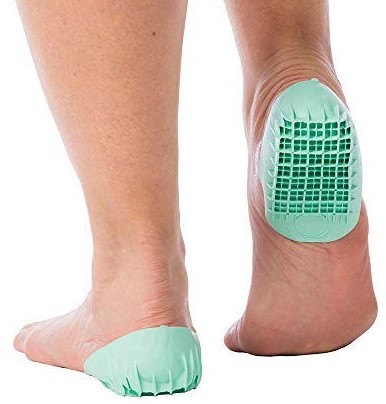
Heel cups are the standardized treatment for heel pain in children and provide two distinct benefits:
- Restrict any excessive motion of the heel
- Provide shock absorption in order to dissipate some of the ground forces felt throughout the heel
These two things together work fluidly to reduce the stress on the heel bone.
There is no question that heel cups are essential (I won’t waste your time on the science behind them), but how do you know which heel cups are best?
If you google “heel cups”, you will see thousands of results… feel free to try it! However, I am here to help you so I can tell you what the best heel cups on the planet are! Save your time and $$$.
I ALWAYS recommend Tuli’s Heavy Duty Heal Cups to my adolescent patients suffering with heel pain and they are NEVER disappointed. These heel cups are the ultimate product for heel pain relief and are the #1 Podiatrist-recommended heel cups in the world. Need I say more?
When you are treating your child’s heel pain with heel cups, it is essential that you have your child wear them inside of their shoes at all times. Don’t worry… no one will even see that they are there!
In addition, according to my patients (one of whom was my son), they are much more comfortable when worn underneath the sole of the shoe.
Heel cups are NECESSARY!
Casting – The Rarity
I would say that 95% of heel pain in children can be cured by combining rest, ice, anti-inflammatory medication, stretching, and heel cups, but for completeness’ sake, I felt the need to mention casting or immobilization as a means of treatment.
IF you have faithfully tried all the above with your child and they STILL complain of significant pain then it is definitely time to visit a physician.
It is a rarity, but sometimes, in extreme cases, casting is necessary to fully rid of your child’s pain.
How to Treat Heel Pain – You NOW Know
I sincerely hope that you see by now that your child’s heel pain is nothing to ignore and I have given you the tools that you need as a parent to successfully eliminate their suffering.
Remember… rest, ice, oral NSAIDs, stretching, and heel cups are critical to implement upon the first complaint of pain! You will be in awe of the success of these modes of treatment.
I appreciate you reading this article and I know that it will help!
As always, should you have any questions regarding any of the information presented here, please feel free to comment below. I am here to help!
Sincerely,
Dr. Misty
Podiatric Physician and Owner/Creator of FixUglyNails.com
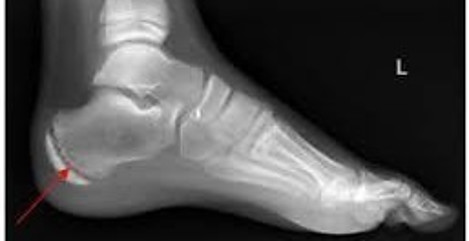

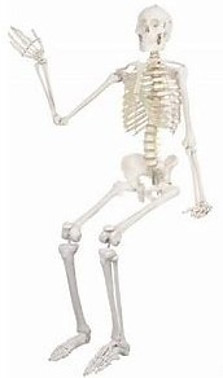

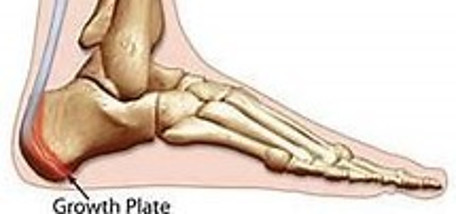
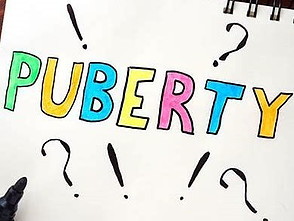 Sever’s Disease in children.
Sever’s Disease in children.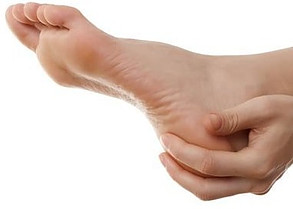

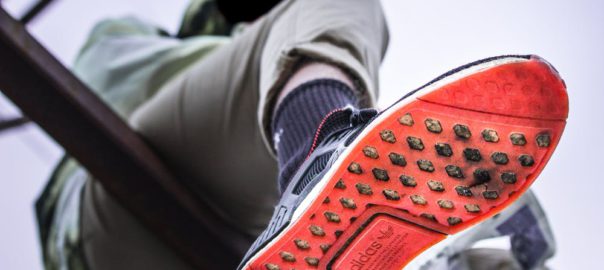
 society. Often times parents will mistakenly contribute this type of pain to merely “growing pains” and either ignore their child’s cries OR wait to implement treatment believing that this pain will eventually “go away” on its own.
society. Often times parents will mistakenly contribute this type of pain to merely “growing pains” and either ignore their child’s cries OR wait to implement treatment believing that this pain will eventually “go away” on its own.
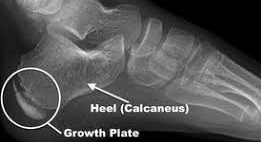
 The signs and symptoms associated with this condition tends to include some or all of the following:
The signs and symptoms associated with this condition tends to include some or all of the following: Symptoms frequently seen with Tendo-Achilles Bursitis can include the following:
Symptoms frequently seen with Tendo-Achilles Bursitis can include the following: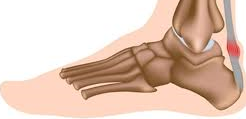 Symptoms associated with Achilles Tendinitis include some or all of the following:
Symptoms associated with Achilles Tendinitis include some or all of the following: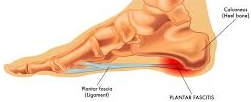 Symptoms frequently seen with
Symptoms frequently seen with 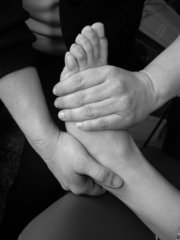
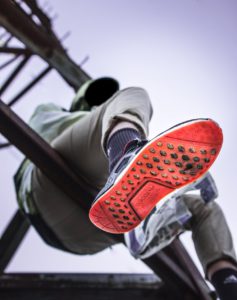

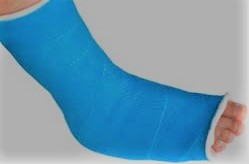 immobilization of the area needs to be implemented in order for the condition to fully resolve. Immobilization may entail either becoming non-weightbearing via the use of crutches or casting. Following the immobilization period, orthotic devices and/or physical therapy modalities are usually implemented to ensure the condition does not return.
immobilization of the area needs to be implemented in order for the condition to fully resolve. Immobilization may entail either becoming non-weightbearing via the use of crutches or casting. Following the immobilization period, orthotic devices and/or physical therapy modalities are usually implemented to ensure the condition does not return.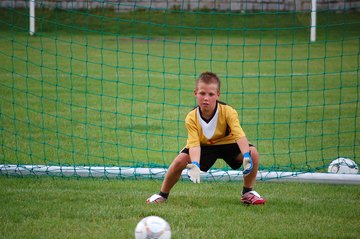 events.
events.